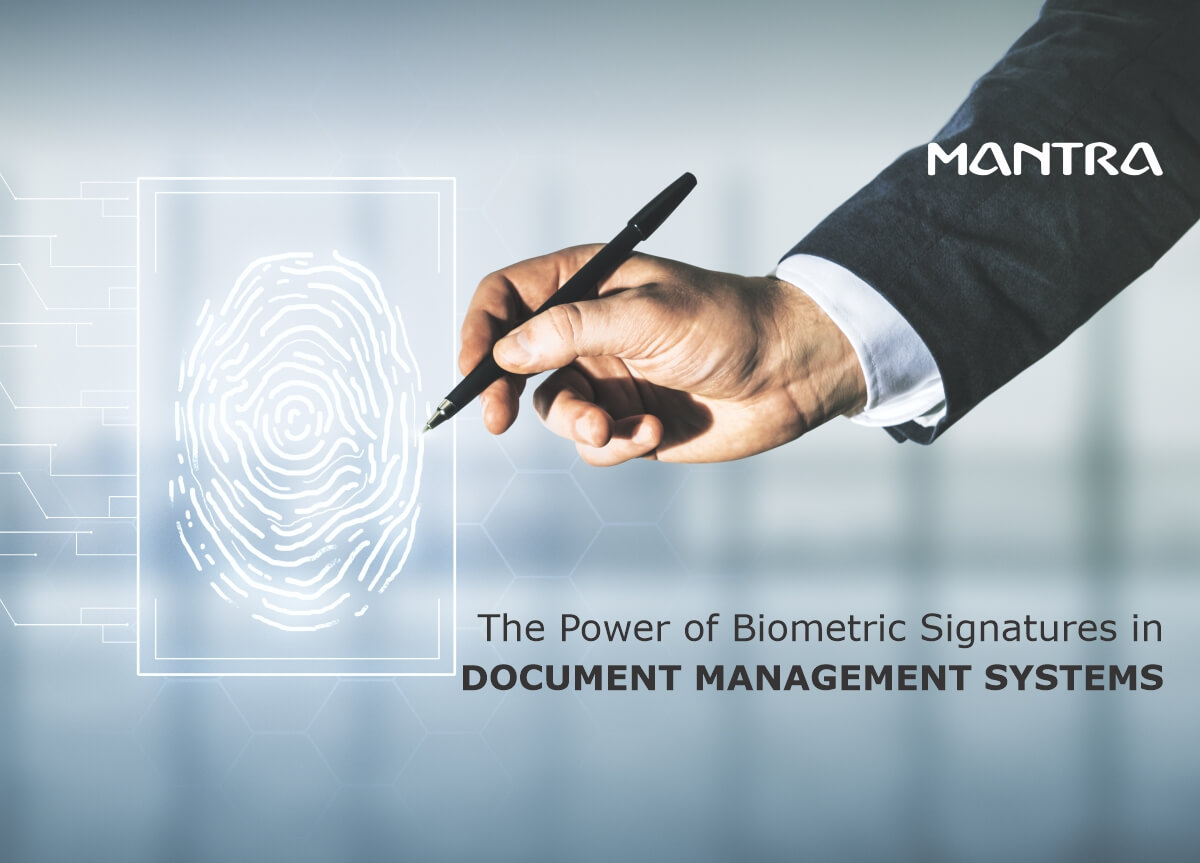
In the era of digitization, businesses and organizations are continually searching for methods to streamline processes, reduce paperwork, and improve security. The implementation of biometric signatures is a revolutionary solution that is reshaping the document management landscape. In this article, we will examine how biometric signatures are transforming document management systems, bringing greater security, efficiency, and trust to the forefront.
The Evolution of Document Management
Traditional document management often involves the use of paper-based signatures, manual filing, and physical storage, which can be time-consuming, error-prone, and susceptible to fraud. With the introduction of digital document management systems, many of these obstacles were resolved, but the requirement for secure and legally binding signatures remained.
Biometric signatures provide a more secure and efficient alternative to conventional handwritten signatures.
Understanding Biometric Signatures
Biometric signatures entail the capture and verification of a person's unique physiological or behavioral characteristics, such as their handwriting style or the pressure applied when signing. These characteristics are then used to generate an individual-specific digital signature that is highly secure and virtually impossible to replicate or falsify.
Key Benefits of Biometric Signatures in Document Management
Improved Security: Traditional handwritten signatures provide a lower level of security than biometric signatures. They are difficult to forge, and the biometric information used for authentication is extremely unique for each individual.
Efficiency: Digital biometric signatures can be applied instantaneously to documents, eliminating the need for paper, scanning, and mailing. This expedites document processing and streamlines document workflows.
Legally Binding: When certain criteria are met, biometric signatures can be legally binding in many jurisdictions, providing the same level of legal validity as traditional handwritten signatures.
Audit Trails: Document management systems with biometric signatures typically include robust audit trail capabilities, enabling organizations to trace and verify the authenticity of signed documents.
Implementation of Biometric Signatures in Banking and Financial Services
1. Banking and Financial Services
Biometric signatures are acquiring traction in the banking industry for account openings, loan applications, and secure transactions. Customers can electronically sign documents using their biometric information, enhancing both security and convenience.
2. Healthcare
Patient consent forms, medical records, and prescriptions can all benefit from biometric signatures in the healthcare industry. In addition to streamlining administrative duties, this ensures the integrity and confidentiality of sensitive patient data.
3. Legal and Contract Management
For contract execution and legal documentation, law firms and legal departments increasingly use biometric signatures. In the legal field, the increased security and decreased turnaround periods are especially valuable.
4. Government and Public Services
Biometric signatures are being implemented by government agencies to increase the security and authenticity of official documents such as permits, licenses, and tax forms. Citizens can sign and submit documents online in a secure manner, eliminating the need for in-person visits.
Challenges and Considerations
While biometric signatures provide numerous benefits, there are also challenges and factors to consider:
Privacy: When handling biometric data, privacy and data protection regulations must be carefully considered. Organizations are required to store and handle biometric information securely.
Adoption of Technology: Introducing biometric signature solutions could necessitate an initial investment in technology and training. Organizations must plan for a seamless transition and user training.
Legal Framework: The legal recognition of biometric signatures can vary from jurisdiction to jurisdiction. To ensure compliance, organizations should be aware of the legal requirements in their region.
Biometric Signatures Are the Future of Document Management
Biometric signatures hold tremendous promise for the future of document management as technology continues to advance.
1. Integration with AI and Machine Learning: Biometric signature verification systems will become more advanced, utilizing artificial intelligence and machine learning to improve accuracy and security.
2. Broad Adoption: Biometric signatures are likely to become a standard feature in document management systems across multiple industries, decreasing reliance on paper-based processes even more.
3. Continued innovation:Continued innovation will result in more user-friendly biometric signature solutions, making it simpler for people of all backgrounds to utilize and trust these systems.
4. Blockchain Integration:Using blockchain technology can improve the security and traceability of biometric signatures, making them even more resistant to tampering.
The integration of biometric signatures into document management systems represents a significant step forward in the digital transformation of businesses and organizations, as a conclusion. Biometric signatures' enhanced security, efficiency, and reliability are transforming how documents are managed, signed, and verified. As the technology improves and finds traction, it promises to become a foundational component of modern document management systems, bringing us closer to a completely paperless and secure future.
In an increasingly digital world, businesses and organizations that adopt biometric signatures today not only streamline their operations, but also strengthen their commitment to security and efficiency.
Comments